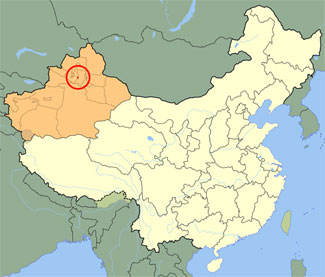Shihezi – China’s Cotton and Textiles Hub
Op-Ed Commentary: Chris Devonshire-Ellis

Oct. 12 – One of the hidden treasures of Xinjiang is Shihezi. Actually the region’s second largest city after Urumqi, this has long been a farming community and is often regarded with typical Chinese aplomb as “A Shining Pearl in the Gobi Desert.”
But while much of Xinjiang’s trade revolves around crops such as tomatoes, melons, fruits and nuts, Shihezi is different. For Shihezi is one of the primary producing areas of Chinese cotton. Here, it’s the textile industry that dominates in a crop that is also agricultural.
Foreign investors are wising up too, and the city has done much to invest in itself to promote growth and prosperity – it has its own university specializing in agriculture with over 1,500 teachers and over 30,000 students, including foreign intakes from Russia, Kazakhstan, Pakistan, Kyrgyzstan, and South Korea.
 The Shihezi Border Economic Cooperation Area operates in a manner similar to a free trade zone, with facilities for processing; while the city is connected to Urumqi directly by UNDP-sponsored national highways and a rail line.
The Shihezi Border Economic Cooperation Area operates in a manner similar to a free trade zone, with facilities for processing; while the city is connected to Urumqi directly by UNDP-sponsored national highways and a rail line.
The city policy towards agriculture changed in the early 1990s and now the textile industry dominates the local economy, with cotton being the main crop. Some improvements need to be made as much of the harvest is still handpicked, and this is back breaking, arduous, and unpopular labor. Getting migrant labor to work the plantations can be difficult, but already there are plans to mechanize the entire harvesting process, doing away with migrant labor and getting far more efficiencies into the cotton industry here.
Xinjiang itself is now China’s largest producer of cotton and produced about 2.5 million tons last year, being about 30 percent of the nation’s total production. Some 1.4 million hectares are under cultivation in Xinjiang itself, and the state of the labor problem can be ascertained by the October and November migration of over 1 million laborers. Most arrive from Qinghai, Gansu and Ningxia and head to Xinjiang for 10 weeks each year to harvest the crop. The current five year plan calls for all cotton to be machine harvested by 2015, lessening the reliance on migrant labor and improving yields and overheads. Shihezi meanwhile is at the heart of all this.
For foreign investors involved with supplying equipment for cotton harvesting, or for companies wanting to grow and source their own supplies – Shihezi is a city name that should be on your radar.
Dezan Shira & Associates advises foreign clients on investments into China’s western regions. The firm can be reached for foreign investment tax, business advisory, establishment, and legal advice at info@dezshira.com.
Related Reading
 Business Guide to West China
Business Guide to West China
This book is a detailed overview of West China, including the provinces of Gansu, Guizhou, Ningxia, Shaanxi, Sichuan, Tibet, Xinjiang and Yunnan, and includes detailed introductions to the key cities of Chengu, Chongqing, Kashgar, Kunming, Lanzhou, Lhasa, Guiyang, Urumqi, Xining and Yinchuan.
A Business Guide to Western China – Local Markets and Exotic Exports
Tax Policy Clarifications Released for Western Regions
- Previous Article China Bails Out Its Banks
- Next Article China Kicks off National Resource Tax Reform



























